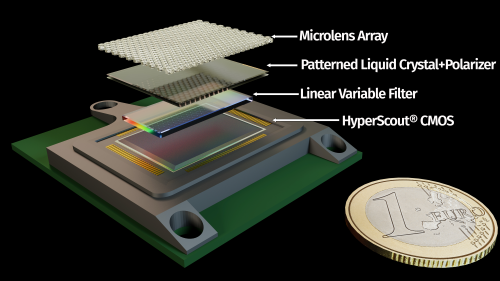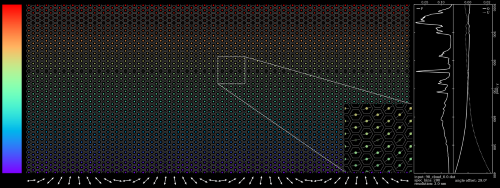LOUPE: Spectropolarimetry in the Search for (Extra)Terrestrial Life
- 1Technical University Delft, Aerospace Engineering Faculty, Astrodynamics and Space Missions, Netherlands (d.klindzic@tudelft.nl)
- 2Leiden Observatory, Leiden University, P.O. Box 9513, 2300 RA Leiden, The Netherlands
- 3cosine Remote Sensing, Oosteinde 36, 2361 HE Warmond, The Netherlands
Since the discovery of the first planets orbiting other stars in the 1990’s, the field of exoplanetary study has come to understand that Earth-like planets, i.e. rocky planets in the habitable zone, are more common than previously thought. Astronomical spectropolarimetry will hold the key in characterizing these exoplanets, including deriving their atmospheric and surface properties from linearly polarized light, such as the presence of oxygen, liquid water, continents, oceans, clouds, vegetation, ice, deserts; and even their circularly polarized biomarkers – signs of homochiral extraterrestrial life. But, in order to recognize life in the Universe, we ought to first use life on Earth as an observational benchmark.
We present a novel spectropolarimetric instrument design: LOUPE, the Lunar Observatory for Unresolved Polarimetry of the Earth (Klindžić+, submitted), which aims to observe the Earth from the Moon as if it were an exoplanet and perform spectropolarimetric measurements spanning the full range of phase angles. Various reasons make observing the Earth from the Moon or from a Lunar orbit, rather than a low Earth orbit, crucial to the experiment:
LOUPE’s science requirements include:
- Perform near-instantaneous (snapshot) spectropolarimetry of the entire Earth.
- Detect the presence of liquid water oceans and clouds.
- Derive and monitor atmospheric properties, e.g. via Rayleigh scattering, for potential climate research applications.
- Detect the O₂A band in flux and polarization and its variance with cloud cover, altitude and phase angle.
- Detect the Chlorophyll Green Bump and Vegetation Red Edge, the spectroscopic signature of plant life.
- Derive a map of continents from the disk-integrated signal and identify notable features, such as rainforests, deserts and ice caps.
LOUPE shall perform its science goals by recording and demodulating the disk-integrated Stokes vector of sunlight reflected from the Earth. The leading instrument design principle adopted for LOUPE is to create a compact, low-mass, low-volume, space-ready hyperspectropolarimeter with no moving parts. These constraints require creative solutions from the cutting edge of hyperspectral and polarimetric instrument design, where polarimeters traditionally used active rotating optics (temporal modulation) or beam-splitting (spatial modulation).
The latest LOUPE concept (Fig. 1.) utilizes Patterned Liquid Crystal (PLC) plates for encoding polarization information as a modulation orthogonal to the spectral flux measurement, enabling the linear-Stokes vector of a target to be recorded in one single “snapshot”, as shown in Fig. 2. Unlike a traditional rotating-retarder polarimeter, polarization is modulated in the cross-spectral direction, meaning polarimetry can be performed at full spectral resolution, which is not possible in the case of channeled spectropolarimetry with spectral modulation. This pioneering use of Patterned Liquid Crystals makes it possible to forgo the use of moving elements, resulting in a compact, space-ready instrument with versatile options of installation on a range of landing, roving and orbiting missions.
Fig 1: Tentative design of LOUPE.
.
Figure 2: Simulated LOUPE measurement. Wavelength filtering is applied in the y-direction, and polarization modulation in the x-direction. Each dot represents an unresolved image of the Earth.

How to cite: Klindžić, D., Stam, D., Snik, F., Pallichadath, V., van Dijk, C., and Esposito, M.: LOUPE: Spectropolarimetry in the Search for (Extra)Terrestrial Life, Europlanet Science Congress 2020, online, 21 September–9 Oct 2020, EPSC2020-887, https://doi.org/10.5194/epsc2020-887, 2020

